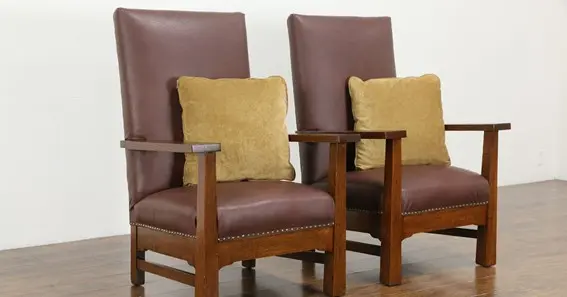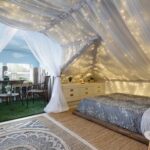Antique faux quarter-sawn oak furniture refers to pieces crafted to mimic the appearance of genuine quarter-sawn oak, a technique prized for its distinctive grain pattern and durability. In authentic quarter-sawing, oak logs are cut radially into quarters before being sliced into boards, revealing unique medullary ray patterns, often called “tiger stripes.” However, due to the labor-intensive and costly nature of this process, furniture makers developed methods to replicate this sought-after look using more economical materials and techniques.
Materials Used in Faux Quarter-Sawn Oak Furniture
To achieve the appearance of quarter-sawn oak without the associated costs, craftsmen employed various strategies:
- Alternative Woods: Less expensive woods with a naturally similar grain, such as ash or chestnut, were sometimes used. These woods could be stained to resemble oak, offering a comparable aesthetic at a lower cost.
- Veneers: Thin slices of quarter-sawn oak or other woods with desirable grain patterns were applied over solid wood substrates. This method provided the visual appeal of quarter-sawn oak while conserving material.
- Graining Techniques: Artists employed hand-painting or staining methods to simulate the distinctive medullary ray patterns on plain-sawn oak or other woods. This approach required skill to convincingly replicate the intricate designs characteristic of quarter-sawn oak.
Craftsmanship and Techniques
The creation of faux quarter-sawn oak furniture demanded a high level of craftsmanship:
- Surface Preparation: The base wood surface was meticulously sanded and primed to ensure proper adhesion of veneers or paint.
- Application of Veneers: Veneers were carefully glued and pressed onto the substrate, with attention to aligning grain patterns to enhance realism.
- Hand-Painted Graining: Using specialized tools and brushes, artisans painted grain patterns onto the prepared surface, often employing multiple layers and glazes to achieve depth and authenticity.
- Finishing Touches: Once the desired grain effect was achieved, protective finishes such as shellac or varnish were applied to seal the surface and enhance durability.
Frequently Asked Questions
- What is quarter-sawn oak?
- Quarter-sawn oak is lumber cut radially from the log’s center, revealing distinctive grain patterns known as medullary rays or “tiger stripes.”
- Why was faux quarter-sawn oak furniture created?
- Due to the expense and labor involved in producing genuine quarter-sawn oak, craftsmen developed faux techniques to replicate its appearance more affordably.
- What materials were used in faux quarter-sawn oak furniture?
- Craftsmen used alternative woods like ash or chestnut, applied veneers, or employed hand-painted graining techniques to mimic the look of quarter-sawn oak.
- How can one identify faux quarter-sawn oak furniture?
- Indicators include uniform grain patterns suggesting veneers, visible brush strokes from painted graining, or inconsistencies in grain direction.
- Is faux quarter-sawn oak furniture valuable?
- While it may not hold the same value as genuine quarter-sawn oak pieces, well-crafted faux furniture can still be of significant historical and aesthetic worth.










